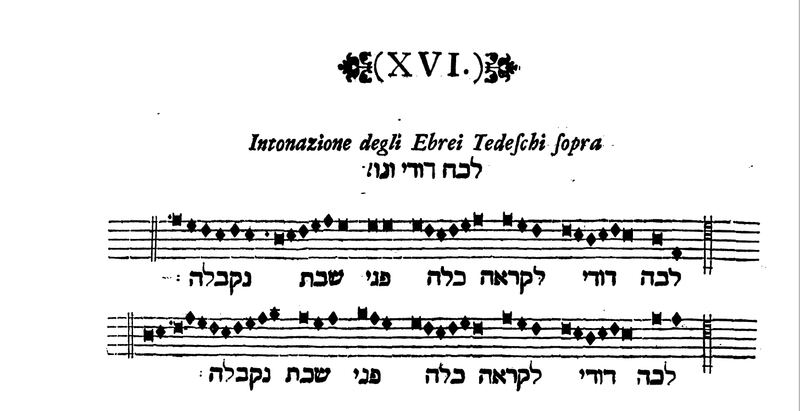The "Benedetto Marcello" melody
This melody was included by Benedetto Marcello in his Estro Poetico Armonico, published in Venice in 1724.
Marcello reported the music as having been transcribed from a local cantor, and belonging to the repertoire of the "scuola tedesca".
Here is a link to Edwin Seroussi's article on Marcello's transcriptions.
Giuseppe Bassani, a lawyer from Ferrara, sent a transcription of a very similar melody to A.Z. Idelsohn in 1932; reporting it as in use in the "scuola tedesca" in Ferrara.
The melody is almost identical in its first half; the second half is not entirely alien to the Marcello melody, but presents various differences.
Rabbi Leoni Leoni recorded for Leo Levi in 1954 four versions of Lekhah Dodi, belonging to the Ferrara, scuola tedesca repertoire. The first one is an exact rendition of the melody in Bassani's transcription.
Leoni recorded the first two strophes of the poem with this melody.
The second melody recorded by Leoni is similar. The second half of the tune is identical to the previous version, and to Bassani's transcription; the first half could be a variation on the theme.
Leoni used it in his recording to record the last strophe of the poem, and the refrain. It would be reasonable to assume that Leoni was describing a situation in which Lekhah Dodi's first strophes are sung to the first melody; then a variation is used for the concluding strophes. Changing melodies at some point of the long poem is a very common practice with Lekhah Dodi, in many communities throughout the world.
But other recordings (Carluccio Schoenheit in 1974, Fernando Procaccia in 1956), tell a different story: they attest the usage of Leoni's second melody for the whole poem.
If this is so, it might well be that the melody we find in Bassani's transcription (and Leoni's first recording), presents a fusion between two different original melodies: the one in Benedetto Marcello, and an independent one we hear in Leoni's second recording, as well as Schoenheit and Procaccia.
